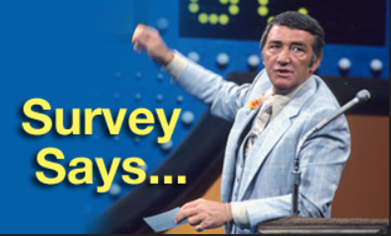Court Orders Defendants to Sample Disputed Documents to Help Settle Dispute: eDiscovery Case Law
In Updateme Inc. v. Axel Springer SE, No. 17-cv-05054-SI (LB) (N.D. Cal. Oct. 11, 2018), California Magistrate Judge Laurel Beeler ordered the defendants to review a random sample of unreviewed documents in dispute and produce any responsive documents reviewed (along with a privilege log, if applicable) and report on the number of documents and families reviewed and the rate of responsiveness within one week.
Case Background
In this case where the plaintiff, creator of a news-aggregator cell-phone app, claimed that the defendants “stole” their platform and released a copycat app, learned that the defendants used the code name “Ajax” to refer their product. The defendants determined that there were 5,126 unique documents (including associated family members) within the previously collected ESI that hit on the term “Ajax”, but they had not reviewed those documents for responsiveness. The plaintiff asked the court to order the defendants to review those documents and produce responsive documents within two weeks.
The defendants claimed that the term “Ajax” is a project name that they created to refer to the plaintiff’s threatened litigation, not the product itself and claimed that “a sampling of the `Ajax’ documents confirms that, in every responsive document, the term `Ajax’ was used to refer to the dispute itself.” But, the plaintiff cited 93 produced documents generally and two documents in particular (which the defendants were attempting to clawback as privileged) that referred to their product. However, the defendants also claimed that it would be unduly burdensome and expensive to review the “Ajax” documents at this stage of the litigation and also argued that the term “Ajax” was not included in the ESI Protocol that the parties agreed upon months ago and should not be added at this late stage.
Judge’s Ruling
Judge Beeler observed this: “Whether ‘Ajax’ refers to Updateme or only the defendants’ dispute with Updateme is in some sense a distinction without a difference. Either way, the search term ‘Ajax’ is likely to return documents that are responsive to Updateme’s request for “[a]ll communications . . . concerning Updateme or the updaemi® application[.]” Documents concerning the defendants’ dispute with Updateme are likely documents concerning Updateme.”
Judge Beeler also noted that “even if ‘Ajax’ refers to the dispute, that does not mean that documents that contain ‘Ajax’ are necessarily more likely to be privileged or protected from disclosure”, using a hypothetical scenario where two non-lawyers might discuss the impact of the “Ajax” dispute on profits. She concluded her analysis with this statement: “To the extent the defendants are suggesting that if ‘Ajax’ purportedly refers to their dispute with Updateme, ESI containing ‘Ajax’ should remain outside the scope of discovery, the court is not convinced.”
As a result, Judge Beeler ordered the defendants to “randomly select 10% of the unreviewed documents {in dispute}, review them (and their associated family members) for responsiveness, produce responsive documents (and a privilege log for any responsive documents that are withheld), and provide a chart listing the number of documents and families reviewed and the rate of responsiveness” within one week. Judge Beeler stated that the parties should then meet and confer if they continued to have disputes regarding these documents.
So, what do you think? Should random sampling be used more to settle proportionality disputes or should it be a last resort? Please let us know if any comments you might have or if you’d like to know more about a particular topic.

Case opinion link courtesy of eDiscovery Assistant.
Sponsor: This blog is sponsored by CloudNine, which is a data and legal discovery technology company with proven expertise in simplifying and automating the discovery of data for audits, investigations, and litigation. Used by legal and business customers worldwide including more than 50 of the top 250 Am Law firms and many of the world’s leading corporations, CloudNine’s eDiscovery automation software and services help customers gain insight and intelligence on electronic data.
Disclaimer: The views represented herein are exclusively the views of the author, and do not necessarily represent the views held by CloudNine. eDiscovery Daily is made available by CloudNine solely for educational purposes to provide general information about general eDiscovery principles and not to provide specific legal advice applicable to any particular circumstance. eDiscovery Daily should not be used as a substitute for competent legal advice from a lawyer you have retained and who has agreed to represent you.








